+Search query
-Structure paper
| Title | Understanding the molecular mechanisms of odorant binding and activation of the human OR52 family. |
|---|---|
| Journal, issue, pages | Nat Commun, Vol. 14, Issue 1, Page 8105, Year 2023 |
| Publish date | Dec 7, 2023 |
 Authors Authors | Chulwon Choi / Jungnam Bae / Seonghan Kim / Seho Lee / Hyunook Kang / Jinuk Kim / Injin Bang / Kiheon Kim / Won-Ki Huh / Chaok Seok / Hahnbeom Park / Wonpil Im / Hee-Jung Choi /   |
| PubMed Abstract | Structural and mechanistic studies on human odorant receptors (ORs), key in olfactory signaling, are challenging because of their low surface expression in heterologous cells. The recent structure of ...Structural and mechanistic studies on human odorant receptors (ORs), key in olfactory signaling, are challenging because of their low surface expression in heterologous cells. The recent structure of OR51E2 bound to propionate provided molecular insight into odorant recognition, but the lack of an inactive OR structure limited understanding of the activation mechanism of ORs upon odorant binding. Here, we determined the cryo-electron microscopy structures of consensus OR52 (OR52), a representative of the OR52 family, in the ligand-free (apo) and octanoate-bound states. The apo structure of OR52 reveals a large opening between transmembrane helices (TMs) 5 and 6. A comparison between the apo and active structures of OR52 demonstrates the inward and outward movements of the extracellular and intracellular segments of TM6, respectively. These results, combined with molecular dynamics simulations and signaling assays, shed light on the molecular mechanisms of odorant binding and activation of the OR52 family. |
 External links External links |  Nat Commun / Nat Commun /  PubMed:38062020 / PubMed:38062020 /  PubMed Central PubMed Central |
| Methods | EM (single particle) / X-ray diffraction |
| Resolution | 2.84 - 3.66 Å |
| Structure data | EMDB-35010, PDB-8hti:  EMDB-35770: Human Consensus Olfactory Receptor OR52c in Complex with Octanoic Acid (OCA) and G Protein (Consensus map)  EMDB-35772: Human Consensus Olfactory Receptor OR52c in Complex with Octanoic Acid (OCA) and G Protein (Receptor-focused map)  EMDB-35773: Human Consensus Olfactory Receptor OR52c in Complex with Octanoic Acid (OCA) and G Protein (G protein-focused map) EMDB-35971, PDB-8j46: EMDB-37336, PDB-8w77:  PDB-8htg: |
| Chemicals | 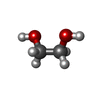 ChemComp-EDO:  ChemComp-MG: 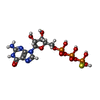 ChemComp-GSP: 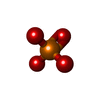 ChemComp-PO4:  ChemComp-HOH: 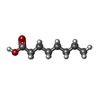 ChemComp-OCA: |
| Source |
|
 Keywords Keywords | SIGNALING PROTEIN / G protein / MEMBRANE PROTEIN / Olfactory Receptor / GPCR / Olfactory GPCR |
 Movie
Movie Controller
Controller Structure viewers
Structure viewers About Yorodumi Papers
About Yorodumi Papers




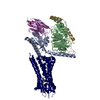



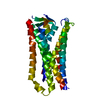
 homo sapiens (human)
homo sapiens (human)

